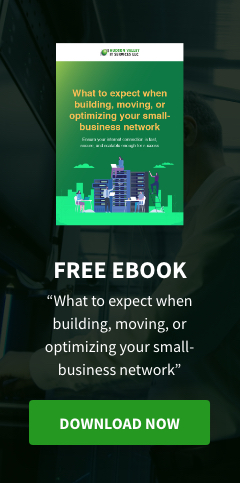Common belief holds that information technology is a necessary expense, and that it’s the sole responsibility of the IT department. This line of thinking has resulted in a disconnect between technology and business strategy. Technology alignment seeks to close this gap by deploying and managing IT systems and processes in line with business strategy. While you’ll never achieve perfect alignment, the following steps will help ensure you’re moving in the right direction:
#1. Identify key business drivers
More than ever, adopting new technologies needs buy-in from senior management. The first step is to identify the key business imperatives that are driving IT. In other words, you need to determine which business drivers require modern technology to function optimally. For example, if the company is launching a new product, it might need a new fulfillment system. And because business needs are constantly changing, it’s important to regularly review your key business drivers.
#2. Establish a culture of innovation
The next step is to move away from the common misconception that IT solely belongs to the realm of the IT department. Since senior management will be choosing technologies based on business goals, and employees and customers will be the end users of those technologies, it’s imperative that you establish a culture of innovation throughout the company. CIOs should establish a vision that sets out the guidelines and communicates the benefits of modern technology in the workplace to each department.
#3. Assess your IT maturity
Working towards technology alignment isn’t about scrapping everything that you have in place already. It’s about continuous improvement and long-term strategic planning. Before you can choose the optimal processes and solutions, you’ll first need to review your current situation. Chances are, there are already some things that are working well and others that need some improvement. The three main areas to consider when assessing your IT maturity are budget, assets, and organizational structure.
#4. Isolate any blockers of innovation
The next step involves locating and isolating anything that can get in the way of innovation. Again, you’ll want to consider your budget, assets, and business processes. Common blockers of innovation include a lack of in-house expertise, outdated or incompatible systems, and budgetary constraints. To drive a culture of change, you need to familiarize yourself with what currently works and what doesn’t. You can then create a list of problems that will help you choose the right solutions and prioritize your initiatives.
#5. Prioritize your IT initiatives
Every organization has limited resources, and technology alignment isn’t something you can expect to achieve overnight. In fact, it’s an ongoing process that’s evolving in line with the needs of the current market. Since some fixes are harder and take longer to apply than others, it’s important that you prioritize carefully to avoid overburdening your team or, worse, risking unplanned outages. For example, the rollout of any systems that are essential to an upcoming product launch will need to be prioritized.
#6. Evaluate your implementation options
Now comes the time to actually choose the technology solutions that will achieve alignment. This is perhaps the most complicated step of all, since there’s no shortage of options out there. For example, if you’re migrating to the cloud, you’ll need to choose between public, private, and hybrid deployments, as well as between the major cloud providers. When evaluating your options, determine how well they would work with your existing systems, and make sure they don’t require any costly or hard-to-implement dependencies or other radical changes.
#7. Create a migration plan
The final stage is to draw up a roadmap of steps, deliverables, deadlines, and responsibilities that are in line with your operational goals and priorities. Migration planning should also include any contingencies. When you're moving large amounts of critical business data, it’s imperative that you prepare for any eventuality, such as unplanned downtime, potential security issues, and incompatibilities. Your migration plan should also be open to modification, as there will always be new things to learn once implementation begins.
Hudson Valley IT Services LLC helps businesses in Middletown, Orange County, Bergen County, and surrounding areas work toward greater technology alignment with industry-leading expertise and solutions you can depend on. Call us today to get started.
Like This Article?
Sign up below and once a month we'll send you a roundup of our most popular posts


